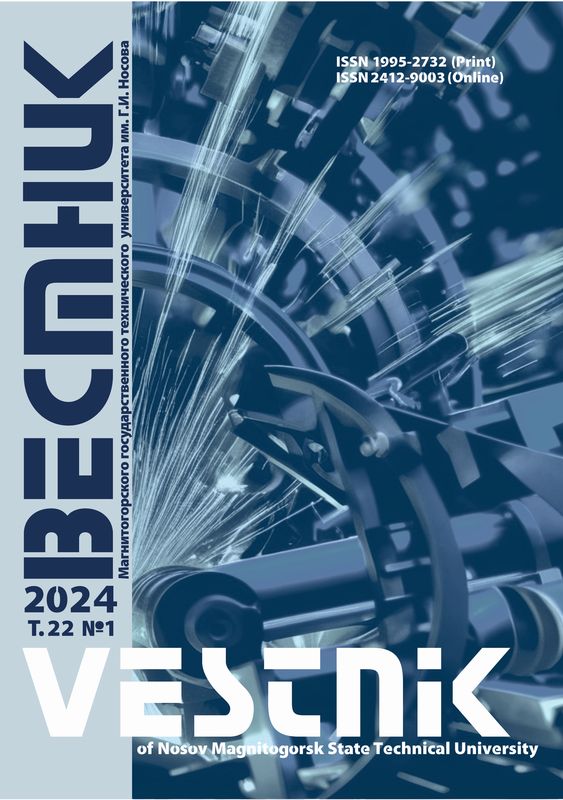Abstract
The paper is devoted to the study of the possible use of corrosion- and heat-resistant steel grade 13Kh12N2W2MF (0.14% C; 10.8% Cr; 1.5% Ni; 1.9%W; 0.4% Mo; 0.3% V) for production of locking devices and parts of oil pumps. Technical specifications for the steels of this class require corrosion resistance, V-notch impact toughness at –60°C (KCV–60) to be 24.6 J/cm2 or higher, and yield and ultimate tensile strength greater than 650 and 800 MPa, respectively. The difficulty is that the parts have different weight and, consequently, different cooling rates after high-temperature tempering. Slow cooling of massive parts made of high-chromium steels may produce temper brittleness intensified by carbide precipitation, which dramatically decreases impact toughness. The first part of the study is about the effect of tempering temperature on room-temperature mechanical properties of the steel grade. Experimental data showed that 2-hour tempering at any temperature does not provide the required combination of strength and toughness, though the results of tempering at 750°C are the closest to it. Attempts to use double tempering at 750°C were successful only in several cases. This is probably due to the fact that, as dilatometric study showed, at 750°C austenite formation started and proceeded in an isothermal mechanism, i.e. the amount of austenite increased with increasing holding time. If one interrupts holding and cools the specimen down, then a part of austenite that formed during holding transforms to martensite. Thus, the first tempering is actually an intercritical quench hardening operation. So, in the second part of the study the intercritical quench hardening was consciously performed by varying the temperature of the first tempering from 750°C to 800°C and decreasing the temperature of the second one to 700°C (holding 2 hours, air cooling) in order to eliminate the strengthening effect of fresh martensite. Results showed that plasticity increases and strength properties decrease steadily with increasing temperature of intercritical quenching. The values of KCV–60 are very high and increase with increasing the temperature of heating in the intercritical range. This effect is mostly due to continuing high-temperature tempering of martensite that had not transformed to austenite, though precipitation and coalescence of carbide particles may play some role, too. However, in this series of experiments the required combination of mechanical properties was not achieved either. It became evident that the temperature of the second tempering of 680–700°C is too high, but now because of a great decrease in yield and ultimate tensile strength of a part of prior martensite that transformed to austenite during the first tempering and then to fresh martensite during austenite cooling lower Мs. The strength of this part of martensite is higher than that of prior martensite tempered in the intercritical temperature range, at any temperature of the second tempering. Thus, the increase of the temperature of the first tempering increases final impact toughness, while the decrease of the temperature of the second tempering increases strength characteristics. The choice of temperatures of both temperings is a multivariant search that requires vast research. We tried only one additional mode, when tempering temperatures were taken as 765°C and 635°C. This provided the required level of mechanical properties with some extra impact toughness, which may be important for massive parts.
Keywords
13Kh12N2W2MF steel; intercritical quench hardening; tempering; strength; impact toughness.
1. Marochnik staley i splavov [Reference book of steels and alloys]. Ed. V.G.Sorokin. Moscow, Mashinostroenie, 1988. 640 p. (In Russ.)
2. Maslenkov S.B. Zharoprochnye stali i splavy [Heat-resistant steels and alloys]. Moscow, Metallurgiya, 1983. 192 p. (In Russ.)
3. Khimushin F.F. Nerzhaveyushchie stali [Stainless steels]. Moscow, Metallurgiya, 1967. 800 p. (In Russ.)
4. Mirzaev D.A., Mirzoev A.A., Sozykin S.A., Vorob’eva A.S. Dilatometric study of critical points of 13Kh11N2V2MF steel. Bulletin of the South Ural State University. Series “Mathematics. Mechanics. Physics”, 2017, vol. 9, no. 3, pp. 66–71. (In Russ.) DOI: 10.14529/mmph170309
5. Bernshteyn M.L., Kaputkina L.M., Prokoshkin S.D. Otpusk stali [Tempering of steel]. Moscow, MISiS, 1997. 335 p. (In Russ.)
6. Mirzoev A.A., Yalalov M.M., Mirzaev D.A. Calculation of the energy of mixing for the Fe–Cr alloys by the first-principles methods of computer simulation. Physics of Metals and Metallography, 2004, vol. 97, no. 4, pp. 336–341. (In Russ.)
7. Kositsyna I.I., Sagaradze V.V., Zuev Yu.N., Peruha A. Decrease in the ductile-brittle transition temperature of a high-chromium reactor steel MANET-II. Physics of Metals and Metallography, 1998, vol. 86, no. 2, pp. 205–210. (In Russ.)












